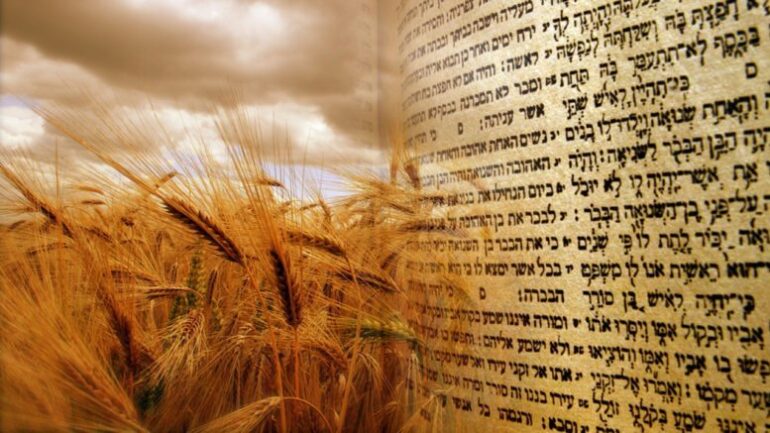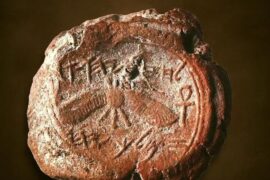In ancient times, Ḥag HaShavuot (Festival of the Weeks) possessed several layers of significance within Israeli society. Along with Pesaḥ and Sukkot, it was one of the three major pilgrimage festivals that brought Hebrews from every tribe across the country to celebrate together as a collective in Jerusalem.
Shavuot specifically celebrates the land of Israel’s wheat harvest and the ripening of first fruits, respectfully emphasized by the day’s two other names – Ḥag HaKatzir (Festival of the Harvest) and Yom HaBikkurim (Day of the First Fruits).
In ancient Israel, Hebrews had an intimate relationship with the natural world and society largely revolved around the agricultural cycles. The seven week period between Pesaḥ and Shavuot begins with the barley harvest and ends with the wheat harvest.
But most importantly, Shavuot – the sixth of Sivan – was celebrated and continues to be celebrated as the day Israel received the Torah at Sinai. After leaving Egypt on the 15th of Nisan, Israel counted seven weeks until arriving at Sinai and sharing an unparalleled experience of collective prophecy.
Fully appreciating the Shavuot festival requires a deeper understanding of the Torah Israel received. Contrary to a widespread misconception, the Torah is not some “religion” or set of fragmented rules and rituals meant to coerce human behavior. Our sages teach that HaShem looked into the Torah and created the world in much the same way an architect looks at his plans (B’reishit Rabbah 1:1). The Torah is the blueprint of existence and the Divine Ideal from before Creation lowered into our world in order to guide Israel in successfully advancing humankind to the conscious awareness of its relationship to the timeless and boundless ultimate Reality we call HaShem.
The Torah has a special relationship with the land and people of Israel. What our sages refer to as Knesset Yisrael is actually a unique spiritual organism that expresses the Divine Ideal in our world through the Torah, Eretz Yisrael and millions of humans in space and time called Jews. The Torah and the land of Israel are the soulmates of the Jewish people and each of the three components are necessary for the fulfillment of Israel’s historic mission.
The Torah helps Israel to fulfill the Hebrew mission by teaching us how to most successfully express our true inner selves – as individuals and as a collective. The Talmud states (Yoma 28b) that “Our patriarch Avraham kept the entire Torah [even before the actual Torah was given to Israel in written form].”
Nefesh HaḤaim (1:21) expands on this by explaining how the Hebrew patriarchs were able to perceive the positive impact of mitzvot on the metaphysical realm, and therefore lived lives in accordance with halakha as an expression of their true inner selves, centuries before Israel received the Written Torah at Sinai. In fact, what Jews call the Oral Torah was actually the national culture of the Hebrew tribes for generations prior to Israel’s Exodus from Egypt. Because the Torah and Jewish people share a soul, the interaction between the two continually impacts both – as can be seen through the development of the Oral Torah and halakha.
While most humans today are sufficiently healthy that their lungs breath and their hearts beat without external guidance or assistance, Israel is no longer and not yet healthy enough to live the mitzvot as a natural function. We still require the Torah’s written form in order to help us in successfully expressing our true selves. Each precept in our Torah helps us to properly reveal our inherent kedusha and behave according to our collective soul’s authentic inner nature.
A deeper and more holistic understanding of Torah actually necessitates an appreciation for the historic Hebrew mission. Humanity’s ability to achieve the goal of Creation is uniquely built into Knesset Yisrael. On Shavuot, Israel celebrates that we are the nation specifically designed to bring HaShem’s light to mankind and to elevate existence to a level where every life form will acknowledge its Divine Source and fully actualize its unique potential.





